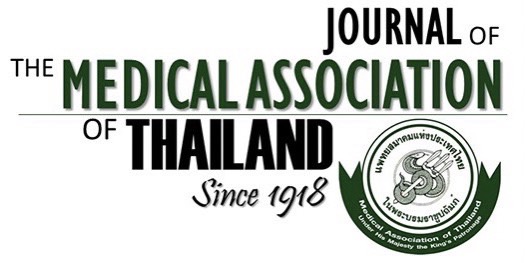Development of a Simple Score for Diagnosis Melioidosis
Kanjana Khaejawat, MD1, Atibordee Meesing, MD2, Anupol Panichote, MD3
Affiliation : 1Department of Medicine, Faculty of Medicine, Khon Kaen University, Khon Kaen, Thailand, 2Division of Infectious Disease and Tropical Medicine, Department of Medicine, Faculty of Medicine, Khon Kaen University, Khon Kaen, Thailand, 3Division of Critical Care Medicine, Department of Medicine, Faculty of Medicine, Khon Kaen University, Khon Kaen, Thailand
Background: Melioidosis is common gram negative bacterial infection in northeastern Thailand caused by Burkholderia pseudomallei. Patients often experience severe conditions and high mortality rates.
Objective: To develop a clinical prediction model to estimate the risk of melioidosis septicemia.
Materials and Methods: This retrospective case-control study included patients with positive hemoculture for Burkholderia pseudomallei (BP) and other gram-negative bacteria (Escherichia coli, and Klebsiella pneumoniae) admitted to Srinagarind Hospital between January 2015 and December 2020. Logistic regression analyses were used to determine the calculation of a score for diagnosing melioidosis infection.
Results: A total of 426 patients with positive hemoculture were included: 132 patients for BP and 294 patients for other gram-negative bacteria. The clinical prediction model for diagnosing melioidosis utilized seven variables: age ≥60 years (-2 points), male gender (3 points), duration of symptom onset to hospitalization ≥7 days (5 points), occupation as a farmer (3 points), presence of diabetes mellitus (2 points), presence of cancer (-5 points), and platelet count (x109/L) (200 to 399.9: 1 point, ≥400: 3 points). The model demonstrated good discrimination (area under the curve: 0.89; 95% CI: 0.86 to 0.93) and acceptable calibration (Hosmer and Lemeshow goodness of fit test: p=0.252). A cut-off point of the melioidosis score ≥5 points (maximum score=16 and minimum score = -7) resulted in an accuracy of 84.3% (95% CI 80.5 to 87.6), a sensitivity of 78.8%, and a specificity of 86.7%.
Conclusion: The melioidosis score exhibited high performance and clinical utility in predicting melioidosis infection.
Keywords : Melioidosis; Burkholderia pseudomallei; Diagnostic score; Clinical prediction model; Gram-negative bacteria



